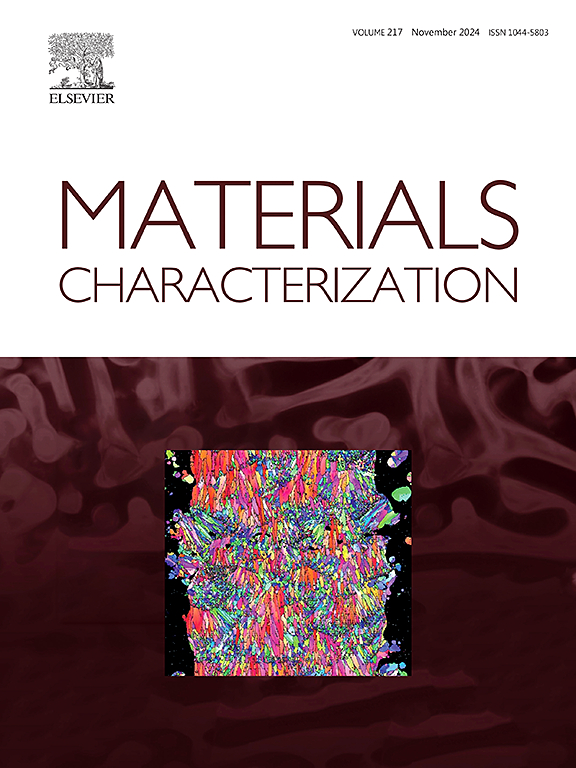The effect of pre-weld microstructures and mechanical properties of 6061 aluminum alloy on the welding quality of FSLW joints between 6061 aluminum alloy and 316 stainless steel
IF 4.8
2区 材料科学
Q1 MATERIALS SCIENCE, CHARACTERIZATION & TESTING
引用次数: 0
Abstract
The effect of pre-weld microstructures and properties of 6061 aluminum alloy on the welding quality of FSLW joints between 6061 aluminum alloy and 316 L stainless steel plates was carried out. The results show that the variations of composition, microstructure and property of pre-welded 6061 plates have a significant impact on the microstructures and properties of 6061/316 L FSLW joints when the welding process parameters are fixed. The high-strength 6061 is prone to introducing defects during the welding process. The strength, plasticity and hardness of the 6061 comprehensively affect the metal fluidity during welding and the ability to achieve better metallurgical/mechanical bonding of 6061 and 316 L. By adjusting the microstructure and properties of 6061 before welding, the metal fluidity of the nugget zone of 6061/316 L can be improved, and the defects can be reduced, thus indirectly improving the properties of the joints. A low proportion of low-angle grain boundaries, low-strength and hardness, high-plasticity and Si-rich phase-free solid-solution 6061 are perfectly suitable for welding with 316 L when the 6061 solution treatment is 500 °C/4 h with water quenching, welding speed is 100 mm/min, the plunge depth is 2.8 mm, and the rotation speed is 800 rpm, respectively. The shear strength of the joint can reach to 8817 N, representing a maximum increase of 173.82 % compared to that of the joint without pre-weld heat treatment. A novel method of using strength and plasticity ratio is proposed to precisely select suitable 6061 plate for high quality 6061/316 L FSLW joints under the given welding conditions.
求助全文
约1分钟内获得全文
求助全文
来源期刊

Materials Characterization
工程技术-材料科学:表征与测试
CiteScore
7.60
自引率
8.50%
发文量
746
审稿时长
36 days
期刊介绍:
Materials Characterization features original articles and state-of-the-art reviews on theoretical and practical aspects of the structure and behaviour of materials.
The Journal focuses on all characterization techniques, including all forms of microscopy (light, electron, acoustic, etc.,) and analysis (especially microanalysis and surface analytical techniques). Developments in both this wide range of techniques and their application to the quantification of the microstructure of materials are essential facets of the Journal.
The Journal provides the Materials Scientist/Engineer with up-to-date information on many types of materials with an underlying theme of explaining the behavior of materials using novel approaches. Materials covered by the journal include:
Metals & Alloys
Ceramics
Nanomaterials
Biomedical materials
Optical materials
Composites
Natural Materials.
 求助内容:
求助内容: 应助结果提醒方式:
应助结果提醒方式:


